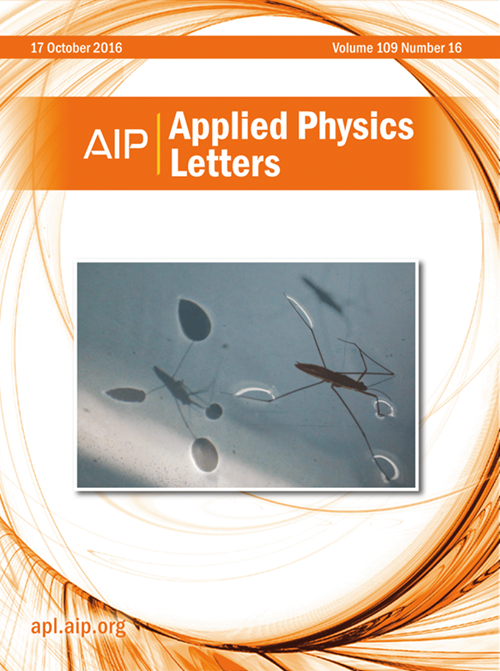Thin absorber AlInAsSb 2-μm SACM APDs with very low and tunable dark currents at room-temperature
IF 3.5
2区 物理与天体物理
Q2 PHYSICS, APPLIED
引用次数: 0
Abstract
AlxIn1−xAsySb1−y digital alloys on GaSb separate absorber charge multiplier avalanche photodiodes that absorb at 2-μm wavelengths have been grown with relatively thin absorber layers ranging from 50 to 400 nm. These devices exhibit extremely low room-temperature dark currents owing to the reduced narrow bandgap absorber material. Compared to previously demonstrated devices, they maintain low dark currents out to high multiplication gains. Specifically, the 100-nm absorber device exhibits a room-temperature dark current density of ∼ 35 mA/cm2 at a multiplication gain of 90, which is the lowest reported room-temperature dark current for a 2 μm absorbing III-V avalanche photodiode operating at elevated gains. As the absorber region was thinned, bulk sources of dark current were suppressed, placing an emphasis on future work to suppress surface leakage and multiplier dark currents. Adjustments to the p-type charge region were also shown to yield large dark current improvements by reducing the electric field in the narrow bandgap absorber region.在室温下具有非常低和可调谐的暗电流的薄吸收AlInAsSb 2-μm apd
AlxIn1−xAsySb1−y数字合金在GaSb独立吸收电荷倍增雪崩光电二极管上生长,吸收波长为2 μm,吸收层相对较薄,范围为50 ~ 400 nm。由于减少了窄带隙吸收材料,这些器件表现出极低的室温暗电流。与先前演示的设备相比,它们保持低暗电流到高倍增增益。具体来说,该100 nm吸收器件在倍增增益为90的情况下,室温暗电流密度为~ 35 mA/cm2,这是在高增益下工作的2 μm吸收III-V雪崩光电二极管所报道的最低室温暗电流。随着吸收区变薄,大量暗电流源被抑制,未来的工作重点是抑制表面泄漏和倍增暗电流。对p型电荷区域的调整也显示出通过减少窄带隙吸收区中的电场来产生大的暗电流改善。
本文章由计算机程序翻译,如有差异,请以英文原文为准。
求助全文
约1分钟内获得全文
求助全文
来源期刊

Applied Physics Letters
物理-物理:应用
CiteScore
6.40
自引率
10.00%
发文量
1821
审稿时长
1.6 months
期刊介绍:
Applied Physics Letters (APL) features concise, up-to-date reports on significant new findings in applied physics. Emphasizing rapid dissemination of key data and new physical insights, APL offers prompt publication of new experimental and theoretical papers reporting applications of physics phenomena to all branches of science, engineering, and modern technology.
In addition to regular articles, the journal also publishes invited Fast Track, Perspectives, and in-depth Editorials which report on cutting-edge areas in applied physics.
APL Perspectives are forward-looking invited letters which highlight recent developments or discoveries. Emphasis is placed on very recent developments, potentially disruptive technologies, open questions and possible solutions. They also include a mini-roadmap detailing where the community should direct efforts in order for the phenomena to be viable for application and the challenges associated with meeting that performance threshold. Perspectives are characterized by personal viewpoints and opinions of recognized experts in the field.
Fast Track articles are invited original research articles that report results that are particularly novel and important or provide a significant advancement in an emerging field. Because of the urgency and scientific importance of the work, the peer review process is accelerated. If, during the review process, it becomes apparent that the paper does not meet the Fast Track criterion, it is returned to a normal track.
 求助内容:
求助内容: 应助结果提醒方式:
应助结果提醒方式:


